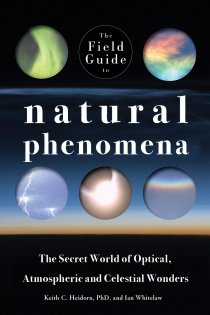 |
 |
| Home | Welcome | What's New | Site Map | Glossary | Weather Doctor Amazon Store | Book Store | Accolades | Email Us |
 | |||||||||||
Weather Almanac for November 2010REVISITING THE WINDS OF NOVEMBERIn one of the early Weather Almanacs on this site (November 1998), I wrote a piece on “The Winds of November”, which derived in part from a line in Gordon Lightfoot’s famous song “The Wreck of the Edmund Fitzgerald.” This time around, I revisit the topic in the form of remembrances of three events attributed to the winds of November that have a significant anniversary this year. The first two occurred seventy years ago in the same month, November 1940 and within days: The destruction of the Tacoma Narrows Bridge in Washington and the Great Armistice Day Storm in the upper Great Lakes region. The third, more recent event is the aforementioned wreck of the Edmund Fitzgerald on Lake Superior in 1975, which happened 35 years ago. The Armistice Day storm (956 mb / 28.50 inches Hg) and the Fitzgerald storm (980 mb / 28.94 inches Hg rank high in the listings of lowest storm central pressure in the central United States and Upper Great Lakes. Interestingly, as I wrote this piece, the central pressure of a mammoth storm moving across the region threatens both marks. As of 4 PM (CDT) 26 October 2010, the central pressure of this storm had dropped to 956.1 millibars (28.23 inches Hg) at International Falls, Minnesota millibars (28.35 inches Hg) which places this storm above these other two benchmark storms. This is also the lowest inland pressure (corrected to sea level) ever recorded in the interior United States. Such low pressure is equivalent to what would be expected in a Category 3 hurricane on the Saffir-Simpson Scale. The Fall of “Galloping Gertie”
While all suspension bridges do sway in the wind to some degree, the Tacoma Narrows Bridge moved even in light winds of 3-4 mph (5-6 km/h), a rippling of the roadway flowed in waves of 2-3 feet (0.6-0.9 m), and occasionally as large as 5 ft (1.5 m), from one end of the center span to the other. Interestingly, strong winds often had no effect on the bridge. The motions of the bridge deck were felt by those crossing the bridge. In fact, motorists often crossed during such galloping events as if it were an amusement park ride, some travelling long distances to “take the ride”. Drivers reported instances when cars in front of them disappeared in the trough of the roadbed wave while they were rising on the crest. The motion was described by reporters and others as the bounce, the ripple, a gallop, a wave, an undulation, and rising and falling like a roller coaster. Soon the newspapers had adopted the nickname “Galloping Gertie,”…. For the rest of this story, click here: The Fall of “Galloping Gertie”The Armistice Day Storm of 1940
The storm had some of the surprise elements that caused great hardships to residents of the same general region in January of 1888, the so-called Children’s Blizzard. As with that storm, the US Weather Bureau had not forecast the storm and missed the maturing storm because the office in charge of the warnings (located in Chicago) had closed for the night. Thousands of duck hunters enjoying good hunting weather had heard a cool down with some snow was coming, and therefore, were unprepared for the sudden and fierce onslaught that hit the marshes of the Upper Mississippi Valley on the 11th. In 1940, the US Weather Bureau was transferred from the US Department of Agriculture to the Department of Commerce as the emphasis of the Bureau’s forecasting services switched from agriculture to aviation. The responsibility for issuing weather warnings was given to district forecast centers and the Chicago office was in charge for the region at issue here. They issued four general forecasts daily plus all warnings. However, there was not the 24/7/365 coverage of the weather at the time that we enjoy today. Each evening the office closed. Today, we would likely class the Armistice Day Storm as a Panhandle Hook (aka a panhandle hooker or Texas hooker). … For the rest of this story, click here: The Armistice Day Storm of 1940The Edmund Fitzgerald Storm
Most listings I have seen of the most violent storms to strike the Great Lakes region place this storm in the top five. One for storms on the Upper Great Lakes rated it second behind the 1940 Armistice Day storm based on lowest pressure. That is, of course, until the massive storm that burst across the region in late October 2010 (as I started writing this piece). The Fitzgerald Storm had similarities to the Armistice Day storm as both are considered Panhandle Hooks and both underwent explosive development. A Short Stormy LifeThe first notice of a developing storm system over the Oklahoma Panhandle came on 8 November 1975: its central pressure around 1006 mb at 0700 EST (1200 UTC). The upper airflow through the region was zonal, with the hint of a trough forming over the southern Rockies. By morning the following day (0700 EST), a definite low cell had formed over central Kansas with central surface pressure of about 1000 mb. The front, on which the cyclonic development had begun, started showing the classical warm front-cold front wedge pattern. At the 500 mb level, a definite upper air trough had formed behind (west) the storm center indicative of cold air invasion to the west of the storm. Unlike the Armistice Day storm,... For the rest of this story, click here: The Edmund Fitzgerald StormLearn More From These Relevant Books
|
|||||||||||
 |
Now AvailableThe Field Guide to Natural Phenomena: |
 |
To Purchase Notecard, |
Now Available! Order Today! | |
 |
 |
Now |
The BC Weather Book: |


